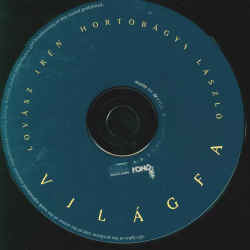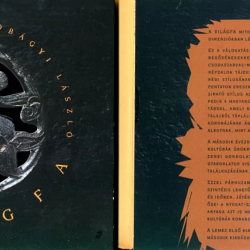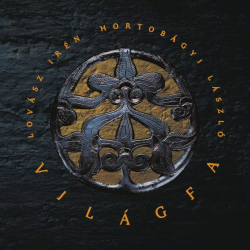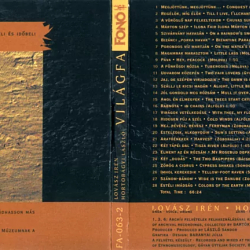World tree
Világfa (World tree) is a mythological image that exists in Hungarian culture and in other cultures as well. It’s branches, trunk and roots tie together the various dimensions of space and time in the real world and in virtual reality. This is what this recording entitled “World tree” does also.
This collection of music strives to present the colorfullness of the many layered ancient Hungarian folk song. Through ancient carols and musical parallels from other related cultures, starting with the various references to the magical stag from ancient Hungarian mythology, making a sweeping arc from east to west with examples of Hungarian folk song to show the similarities and uniquenesses of Hungarian folk song of each region. Contemporary researchers have described the old style Hungarian folk song as being quite complex: the psalmodic and diatonic style of the mourning songs, tetratonic melodies, pentatonic descending – fifth construction style, the layer of shepherd tunes with descending pentantonic structure, etc. What are held to be the the two oldest styles of mourning songs are considered to be remnants of the standard European musical language of the centuries preceding the middle ages, while the descending pentatonic style indicates the connections between Hungarians and the old Turkic peoples. Here the old Hungarian folk songs are coupled with a musical accompaniment reminiscent of ancient and even the new instrumental music world of other cultures. The world tree gets its sustenence from the soil of many cultures, beginning at its roots, branching out, reaching out, bearing many kinds of fruit in its great far reaching crown of branches. Its branching roots meet to create an elliptical system like in the most ancient of drawings.
Here at the end of the Twenty century, it is quite possible that the music which we presently know as the music of the traditional cultures, will dissappear and be completely dissipated in the new world global whirlpool. The disappearance will be final. These musical thoughts, constructions, basic melodies, performance styles will never be born again and the use of them will be irretrievable. At the same we also lose the chance of coming together music of different traditional cultures.
Parallelling this, the possibility emerges for a musical synthesis which wouldn’t be able to happen in traditional life. Several examples of which can be heard on this CD. This is a musical journey in virtual time and space; playing with the notion of what cultural possibilities there might have been if our Hungarian forefathers had headed eastward or southward from their ancient Westen Siberian homeland instead of going to the west. The music on this recording also shows how the richness and universality of the original Hungarian folk music lends itself to impregnation with old and contemporary musical languages of other cultures, in the mode of today’s world music and the future electronic world.
(Irén Lovász, Budapest, 1995. Translated by Sue Foy)
This recording was first released in 1995 as the music accompanying the exhibition at the Hungarian National Museum celebrating the one thousandth anniversary of the Hungarian conquest of the Carpathian Basin. Special thanks to the Hungarian National Museum. This second release was published by Fonó Records in 1999.
- Megjöttünk, megjöttünk… • Conquest (Dunántúli – Mordvin) 3:00
- Regélök, míg élök • Till I live, I’llchant tales (Szlavónia) 4:00
- A vöröslő nap felkeltekor • Chuvas sunrise (Csuvas aratódal) 2:00
- Márton szép • Ilona Fair Ilona Márton (Moldva) 2:38
- Szivárvány havasán • On a rainbow’s snow-mount (Székelyföld) 1:33
- Bizánci „porka havak” • Bizantine Parallel 2:35
- Porondos víz martján • On the watex’s stony bank (Moldva) 3:00
- Magamnak marasztom • Little lass (Moldva) 1:46
- Páva • Hey, peacock (Moldva) 1:50
- A pünkösdi rózsa • Tuberoses (Moldva) 1:50
- Udvarom közepén • Two fair lovers (Gyimes) 2:40
- Jaj, de szépen virjadozik • The dawn is cracking (Moldva) 2:40
- Szállj le kicsi madár • Alight, little birdie (Gyimes) 3:15
- Jól gondold meg rózsám • Mull it over, sweetheart (Jászság) 2:08
- Ahol én elmegyek • The trees start crying (Moldva) 2:04
- Rabnóta • in chains (Alföld) 1:00
- Virágok vetélkedése • With thee, my flower (Zoboralja) 3:10
- Hidegen fúj a szél • Cold Winds (Alföld) 0:50
- Hej, révész, révész • Ferryman (Zoboralja) 3:20
- Esteledik, alkonyodik • Sun’s setting (Alföld) 0:50
- Aratóénekek • Harvest (Zoboralja) 4:20
- Két tápéi dal • Tisza river (Alföld) 1:45
- Elment az én rózsám • My Rosebud departed (Dunántúl) 2:18
- Két „dudás” • The Two Bagpipers (Bácska) 3:02
- Zörög a cidrus • Cypress shakes (Somogy) 1:40
- Imhol kerekedik • Yellow-foot raven (Szlavónia) 1:18
- Szánom-bánom • Wide is the Danube (Zoboralja) 3:12
- Estéli imádság • Colors of the earth (Moldva) 2:35
Total Time : 66:24
Irén Lovász: ének • voice, drone
László Hortobágyi: zene • music, mixologist
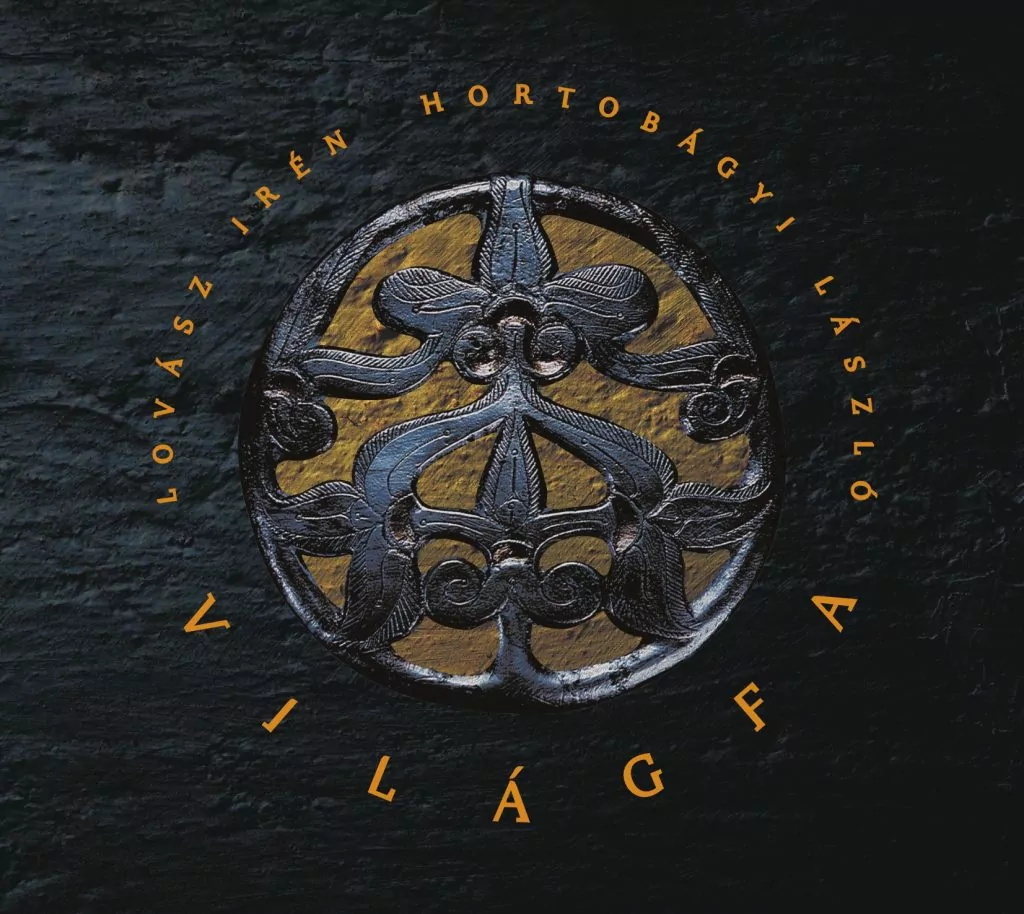
LOVÁSZ IRÉN • HORTOBÁGYI LÁSZLÓ– VILÁGFA
Label: Fonó Records – FA-063-2
Format:CD, Album, Reissue
Country: Hungary
Released: 2000
Genre: Electronic, Folk, World, & Country
Style: Downtempo, Folk, Népzene
- Recorded At – Gayan Uttejak Studio
- Mixed At – Gayan Uttejak Studio
- Pressed By – GZ Digital Media – L13006
- Design – Baranyai Júlia
- Music By, Mixed By [Mixologist] – Hortobágyi László*
- Producer – László Sándor
- Voice, Drone – Lovász Irén*
Recorded and mixed at the Computer Department of Ethnomusicology, Gáyan Uttejak Society, Budapest, 1995.
© ℗ 1999 Fonó Records Ltd.
This recording was first released in 1995 as the music accompanying the exhibition at the Hungarian National Museum celebrating the one thousandth anniversary of the Hungarian conquest of the Carpathian basin.Packaging: 8 panel, black plastic Digipak with die-cut cover on front side.
